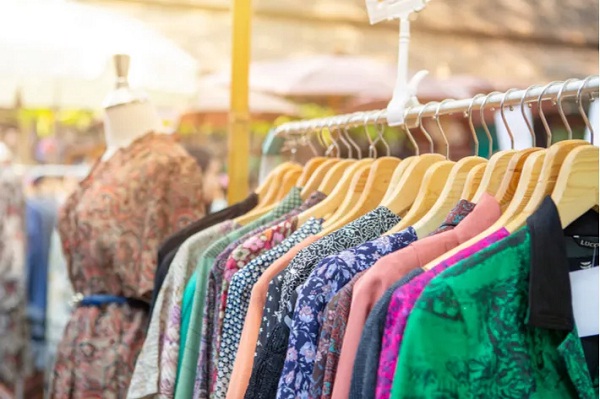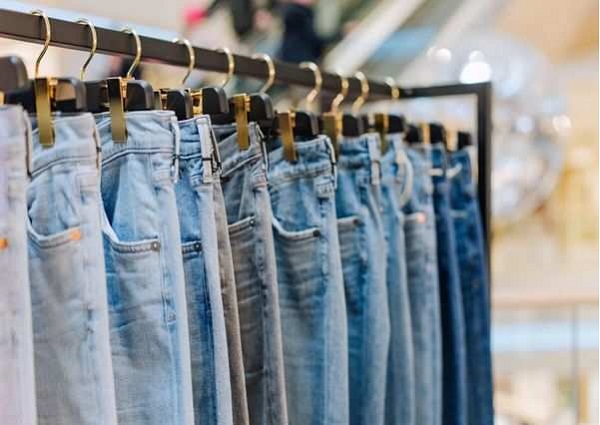Berlin Fashion Summit will be held September 5 to September 7, 2022.
For the occasion, the sustainability conference will again open its doors for progressive minds to discuss the most urgent topics and present practical solutions for the industry. More than 50 speakers will join in 34 sessions to explore this season’s topic, Fashion for Positive Impact: Regenerative Transformation.
The conference will host, among others, a variety of presentation and discussion formats. Under the subject of regenerative transformation, the summit’s participants will explore how people and the planet depend on each other, and how fashion can build bridges between the biosphere, technosphere, and metasphere. The summit will also provide the platform for interdisciplinary collaborations towards the common good to create a positive impact.
This season, the program features six thematic blocks, addressing different facets of regenerative transformation in fashion. The first day tackles how fashion can make a positive impact in the biosphere, focusing on the planet and its communities. Here, topics such as regenerative materials, restoring biodiversity and ecosystems will be highlighted, creating a new culture of inclusion and equity, and reimagining workspaces as ecosystems to grow healthy creative economies.On day two, the attention will focus on transforming the technosphere and metasphere, looking at tech innovations and digitization as areas to apply regenerative transformation.
The textile business situation is worse in Asia than in the rest of the world. So says a survey by the International Textile Manufacturers Federation.
The textile machinery segment is the only segment still in positive territory.Business expectations have also turned negative for the first time since the start of the survey in May 2021. South-East Asia and South America are relatively more optimistic, the downstream segments as well. Business expectations of world order intake are weakening globally but still in positive territory. Here too expectations have turned negative in all textile segments except for textile machinery producers.
A difficult period is expected ahead. Order intake is deteriorating in all Asian regions and stable in North America, South America, and Africa. Order backlog has been slightly decreasing in the past few months, from a maximum of 3.1 months in March 2022 to 2.9 months in July. It is expected to continue falling until March 2023. The capacity utilization rate has been stagnating since the beginning of 2022 on an average. This indicator is rising in Africa and North and Central America. South Asia reports a strong decrease in capacity utilization, so do fiber and home textile producers as well as spinners. While high prices for raw materials, energy, and logistics are still regarded as major supply side concerns, they have somewhat eased compared to May 2022. The prospects of weakening demand caused by surging inflation are worrisome.
ISKO, Officina39 and Elleti Group are attending Munich Fabric Start to show the sector their sustainable interpretation of denim and fashion.
ISKO's journey of evolution heads to Bluezone, the international denim tradeshow hosted by Munich Fabric Start. Its Iconic by nature show concept will highlight ISKO’s collection with innovative technologies, finishes, and colors, providing the basis for ISKO’s sustainable fashion revolution. The technological innovations that bring ISKO fabrics to life have also become inspirations in the hands of Paolo Gnutti, resulting in the ISKO Luxury by PG Collection – Born to Amaze, breaking new ground in the world of premium, luxury denim.
Officina39 has evolved its range of chemical solutions for an increasingly sustainable textile industry: innovative efforts converge in technologies that consistently reduce water use and in key partnerships aimed at circular production, as The Circle Book 3 and the Denim Then and Now project, in occasion of the 20 plus years’ celebration of the Bluesign system.
The Elleti Group will enhance its presence at the Munich show by presenting a capsule collection with Wiser Wash and joining the Italian Luster, a project showcasing the synergies of the Italian supply chain, bringing together virtuous companies from northern Italy.
The recycled clothing market in five EU countries has enjoyed fast growth over the past three years.
These are the United Kingdom, Italy, Germany, France, and Spain.
However, recycled clothing remains a niche product. Ultimately, recycled clothing only accounts for 1.5 per cent of clothing launched in the five EU markets. EU retailers adopt distinct merchandising strategies for clothing made from recycled textile materials. For example, clothing made from recycled materials concentrates on specific product categories, including outwear, swimwear, and bottoms, but is less likely to be available for categories including tops and dresses.
Affected by recycling technologies and raw material supply, recycled clothing sold in the five EU countries mainly uses recycled polyester or a combination of two or more recycled fibers. In comparison, it is still rare to see clothing made from 100 per cent recycled cotton, given the technical difficulty of making recycled cotton strong and durable enough.The unbalanced supply of recycled textile raw materials by fiber types also contributes to the phenomenon that recycled clothing concentrates on specific categories.
Recycled clothing looks bland. As much as 80 per cent of recycled clothing available in the five EU countries adopts the plain pattern and does not contain any graphics, spots, florals, or other designs.
AATCC has dedicated its library to its former executive vice president.
As AATCC’s executive vice president for more than 20 years, John Y Jack Daniels was often found in the Technical Center library researching changes to a test method, corporate members from the 60s, or foundational articles on reactive dyeing. In November 2022, that library will be named in his honor at a public ceremony.
The dedication will be a special feature of AATCC’s fall research committee meeting week. A few years after Daniels’ retirement, 15 past and current presidents of AATCC came together to recommend recognizing his contribution to the association by renaming the Technical Center library. They felt the library was a particularly fitting tribute. During Jack’s tenure as executive vice-president, he has been a staunch supporter and advocate of the association and a student of the historical information and documents retained by AATCC. The move was approved by the AATCC board of directors in May. In 2021, the library was reorganized to highlight some of the AATCC history that Daniels so knowledgeably and proudly shares with friends and colleagues.
More than ever, visitors to the library can share in Daniels’ passion for history and the legacy of AATCC. The presidents believe Jack’s leadership, contribution, and promotion of the association is immeasurable and merits this recognition.
Plummeting sales in the West amid rising inflation driven by the Russia-Ukraine war is the big cloud on the horizon for Bangladesh the apparel industry which has taken a hit. Foreign buyers are cutting new orders and postponing old ones, according to exporters who fear a huge fall in the industry’s earnings for the next few months. Export orders have decreased in August and its effects will be seen in September and October. Many buyers are holding up orders. Walmart has cut orders by 30 per cent. The industry’s condition bore a bright outlook months ago. After it earned $42.2 billion in 2021-22, the government targeted $46 billion worth of exports from the apparel sector for the current fiscal year, although fears of a fallout from the war raging in Europe grew after Russia launched its invasion of Ukraine in February.
In the US, inflation-weary shoppers have been skimping on clothing purchases, prompting retailers to slash prices to clear inventory off the racks. Gap is the latest retailer to report a slump in apparel shopping for the second quarter, saying that net sales slumped eight per cent from a year earlier. Earlier this month, executives at US giants Walmart and Target offered deep discounts and rollbacks on clothing.
The Lenzing Group, world’s pioneer in wood-based specialty fibers, hosted a conclave in New Delhi. The conclave was aimed at connecting the supply chain partners with new generation of fibers and products for the textile industry through knowledge-sharing and rich discussion platform. A key focus at the event was the challenge faced by the industry due to cotton supply and costs. The discussions focused on the scope of end applications made using cotton – Lenzing fiber blends that provide comprehensive benefits throughout the supply chain and to end consumers.
India is among the key markets for the Lenzing Group and the conclave represents its journey of 80 plus years of fiber innovations and a path to the future of textiles and fashion. The conclave came to a successful conclusion with the dissemination of new ideas and an expanded network of partners interested in taking it to market. The participants shared a commitment to implement sustainable and value-driven production throughout the supply chain, all the way to the end consumer. These concepts centered on meeting the market's present fiber needs and solving the challenges related to cost, supply, and economic insecurity. The participants saw the value of better performing and sustainable products meeting the current market needs.

Myammar’s reputation as an ideal sourcing destination has been under scanner since the country’s military coup in 2021. Despite the apparel sector being Myanmar’s largest employers, accounting for 30 per cent of total exports in 2021, it faced substantial job losses and uncertainties due to the coup, indicates UNComtrade 2022.
Nevertheless, fashion companies’ continue to source from Myanmar due to its changing business environment and need to diversify away from China. From January-May 2022, Myanmar’s apparel exports to the EU and the US remained largely stable while those to Japan increased back to level before the military coup, shows UNComtrade data.
Supplementary sourcing base
However, Myanmar’s share in leading apparel import markets US, EU and Japan remain below 5 per cent as most fashion brands and retailers treat Myanmar as a supplementary sourcing base as part of their overall sourcing diversification strategy. On its part, Myanmar is diversifying exports to other countries post the military coup. In 2021, it increased exports to other Association of Southeast Asian Nations (ASEAN) members from 0.3 per cent in 2020 and 2.7 per cent in 2019. Its imports of textile raw materials from Asia also increased to 97.3 per cent, including 72 per cent from China.
Exports determined by trade sanctions
Myanmar’s apparel exports in 2022 were also determined by trade-related sanctions imposed by importing countries. The most significant sanctions were imposed by the US including suspension of 2013 Trade and Investment Framework Agreement and issuance of the Business Advisory for Burma in January 2022. These have made US fashion brands and retailers cautious about sourcing from Myanmar post the coup. The 2021 USFIA industry Benchmarking Study released in July shows, only about 9.4 per cent of respondents reported sourcing from Myanmar, much lower than 19 per cent in 2020 before the military coup.
In contrast, the EU continues to source from Myanmar as it enjoys duty-free benefits under the Everything But Arms (EBA) program. Similarly, Myanmar’s exports to Japan are also quality for duty-free benefits under the Generalized System of Preferences for Least Developed Countries.
Low-cost sourcing base for specialized products
Fashion companies also consider Myanmar a low-cost sourcing destination for specialized categories, particularly outwear. This encourages brands like Zara, H&M, Adidias, etc, to continue sourcing outerwear from Myanmar. The low-price of outwear ‘Made in Myanmar’ also attracts brands to source from there as against China and Vietnam. Myanmar remains a reasonable souring destination for certain types of orders and an ideal destination to diversify away from China.
However, despite these positives, Myanmar’s outlook as an apparel sourcing base remains uncertain due to the recent political turmoil. A few labor unions are calling for a suspension of Myanmar’s EBA eligibility. If implemented, this would cause Myanmar’s apparel exports to suffer substantially. Companies are therefore, urging brands and retailers to make a responsible exit from Myanmar and ensure transparency of operations.

To increase the quality of apparels and boost value addition, Bangladesh denim fabric and apparel manufacturers are opting for more advanced technologies. This is helping manufacturers reduce production costs by at least 30 per cent and lead the global high value denim market.
Technologies aid eco-friendly denims
World’s first LEED platinum-certified denim manufacturer Envoy Textiles has set up a state-of-the-art laboratory to manufacture sustainable products at lower costs. Set up in collaboration with Spanish company Jeanologia, the eco-efficient lab facility will cost Envoy Textiles €270,000 (some Tk2.62 crore) for every 12 months. The lab will be first of its kind at commercial level across the world, says Kutubuddin Ahmed, Chairman, Envoy Textiles.
Adoption of such technologies are helping manufacturers produce eco-friendly denims by using sophisticated washes and curbing water and chemical use. Pacific Jeans another denim manufacturer is also using latest technologies. This helps the company get all technology samples from the world’s most renowned denim technology providers, notes Mohammad Tanvir, Managing Director.
Meeting consumer demand
The only Bangladeshi denim exporter to work with Dutch Fashion brand G-Star Raw for the last 10 years, Genesis Denim adopted sophisticated technologies to meet consumers’ demand in terms of styles, washes and chemical usages. Today, the manufacturer supplies one million jeans worth about $20 million, to the company every year, points out Shafur Rahman, Regional Operations Manager. In return, G-Star RAW pays them up to $35 for a pair for denim pants, while low value denim exporters get $6 on an average, explains Munir Ahmed, Managing Director.
Strong backward linkage help retain position
Strong backward linkage has helped Bangladesh become a global leader in denim manufacturing. The country has maintained its position in the global market despite the ongoing economic recession. As the economic situation in the country improves, more buyers are expected to place new orders as the county offers denims at lucrative price and shorter lead time, points out Kutubuddin Ahmed, Chairman, Envoy Textiles.
Prolonged lead times prevent value addition
Bangladesh denim manufacturers also have an opportunity to add more value to their denim by exploring new quality washes. However, exporters are yet to tap this potential due to long lead times, says Sharif Zarif, Managing Director, Annata Apparels. Also, to produce high-value jeans, these manufacturers need to import fabrics from Turkey, China and Pakistan, he adds.

The restrictions imposed to curb the spread of COVID led to a marked decline in sportswear sales in Western Europe in 2020. However, the sector rebounded in 2021 and is expected to continue growing over the forecast period. As per a Euromonitor report, growth in the sector is being supported by the development of digital capabilities, increasing emphasis on sustainability and growing focus on health and wellness.
Expanding reach of sportswear
Sportswear brands such as adidas and Nike have started offering new athleisure styles that can be worn all day. The pandemic helped expand the reach of sportswear amongst adult consumers who earlier prioritized convenience over appearance. The category is being increasingly penetrated by general apparel brands as against earlier sportswear specialist.
adidas has launched innovative solutions to reduce and erode plastic waste. It has also ventured into several partnerships through its Three Loop Strategy. The brand has pledged to make all products virgin polyester free by 2024 besides reducing the company’s carbon footprint by 30 per cent by 2030, and acheiving climate neutrality by 2050.
High e-commerce penetration boosts market growth
High e-commerce penetration is boosting the sportswear market in Germany. The pandemic significantly boosted sales in 2020 with digital fashion platforms such as Zalando contributing hugely to this growth. Future e-commerce growth is likely to be supported by traditional brick-and-mortar players
Growth to slow down from 2023-2026
While annual growth will remain elevated in 2022, it is likely to slow down to around 1-2 per cent a year from 2023 until 2026. Consumers will continue to focus on health and well-being besides participating in various sporting activities. This will boost demand for sportswear and footwear.
- 1
- 2
- 3
- 4
- 5
- 6
- 7
- 8
- 9
- 10
From Importer to Global Leader: Brazil’s cotton revolution
Brazil’s ascent from a net cotton importer to the world’s largest cotton exporter is one of the most compelling success... Read more
The Unraveling: How Bangladesh's economic crisis threatens its global apparel do…
Bangladesh, a global apparel exports powerhouse, finds itself grappling with a complex economic crisis that is increasingly impacting its ready-made... Read more
US Cotton: Shifting dynamics amidst reciprocal tariffs and quality advantages
The US has long held a dominant position in the global cotton market, thanks to its reputation for producing high-quality... Read more
India’s textile and apparel industry sees mixed fortunes in FY25: Wazir Indices
India’s textile and apparel sector showed mixed results in FY25, with growth momentum visible in sales but profit metrics showing... Read more
UK charts course for circular fashion leadership with new CFIN roadmap
A new landmark report released by the Circular Fashion Innovation Network (CFIN) outlines major strides and a comprehensive roadmap for... Read more
The Unseen Cost of Fashion Returns: Undermining sustainability efforts
Fashion brands are increasingly vocal about their commitment to sustainability, proudly unveiling initiatives centered on recycled polyester, reduced water consumption... Read more
China's Luxury Crossroads: Consolidation or retreat for global giants?
For years, China has been the undisputed El Dorado for global fashion and luxury brands. A growing middle class, with... Read more
Fashion for Good and Arvind unveil Future Forward Factories in India to cut text…
Fashion for Good and Arvind Limited have launched the Future Forward Factories India initiative, a major push to reshape the... Read more
The Scope 3 Challenge: Unpacking the elephant in the emissions room
In the escalating global focus on combating climate change, businesses are under pressure to account for their carbon footprint. While... Read more
Right Size, Right Impact: Personalized fit weaving a sustainable future for fash…
With growing environmental consciousness, the fashion industry, long criticized for its detrimental impact, is looking for new and innovative ways... Read more












